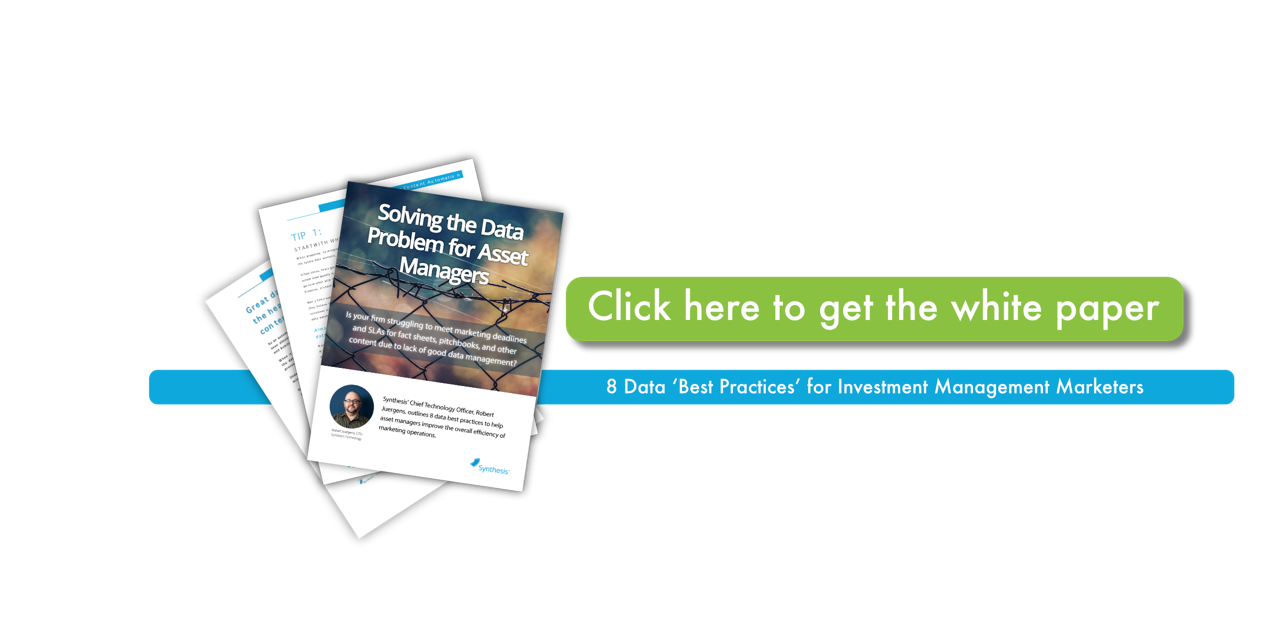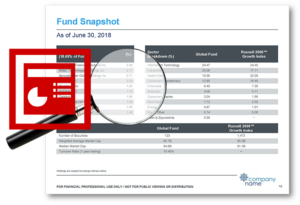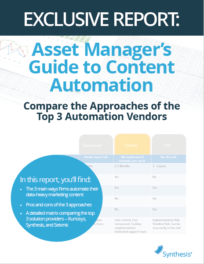Four Ways To Own Your Fund Data
The most successful marketing operations teams have one thing in common: they really own their fund data. Establishing clear ownership and responsibility for the data is critical. In order to take ownership of the data, the first step is to assign data management roles. We recommend building a written matrix defining the following:
- Your data providers (where the data comes from)
- Your data stewards/owners (the person responsible for the data)
- The data consumers (all the places it’s being used)
1. Establish an internal data owner
These roles look different at every firm. At some firms, there is one fund data owner, at others, it’s a handful of people responsible for different data points. For example, there might be a fixed income data owner, a FactSet data owner, an internal data owner, and so on. There must be a defined owner for each data set, regardless of how the roles are structured. A specific person (or small team) is responsible for each data point and is held accountable for delivering the data by an agreed-upon deadline.
2. Set SLAs for the data owner
Data owners should first and foremost know exactly where their data sets and data files come from and thus who to work with when there is an issue. They know when the data arrives, the format it is in, and the quality standards that need to be applied. This is not a technical role. It’s a business role centered on fostering an attitude of ownership around the data. Surprisingly, this role is missing at many firms for many fund data types. Secondarily, the data owner should understand the data well enough to help identify and diagnose data problems at the content level, though sometimes this work is delegated.
3. Foster relationships with data operators and providers
Data owners should foster relationships with both internal data system operators and external data providers such as Morningstar and Lipper where appropriate. These relationships are critical to getting problems escalated and resolved. If necessary, the data owner may need to continuously put pressure on the data providers to improve the quality and consistency of their data. The quality of input data is critical to preventing processing challenges downstream from the data source.
4. Document the data process
Good data owners are problem-solvers. That said, a data owner’s longevity and experience go a long way. One of our most successful clients has a tenured data owner who really knows the data sets and the providers. This is a major advantage when it comes to the fund data process. However, it also represents a key-person risk. What if the data owner leaves and takes the knowledge with them right out the door? Make sure your data owners are continuously documenting their process, methods, and points of contact to minimize risk. This will also ensure there can be a seamless knowledge transfer if necessary.
For a deeper dive into the best practices for investment management fund data, check out this whitepaper from our CTO, Robert Juergens.

Here are some related resources that might interest you:








 Compare the Top 3 Finserv Content Automation Vendors [White paper]
Compare the Top 3 Finserv Content Automation Vendors [White paper] Create Pitchbooks the Drive Sales [White paper]
Create Pitchbooks the Drive Sales [White paper] Build vs. Buy: Should Your Financial Services Firm Outsource or Insource Marketing Technology? [White paper]
Build vs. Buy: Should Your Financial Services Firm Outsource or Insource Marketing Technology? [White paper]  10 Tips for Rebranding your Fund Marketing Documents [White paper]
10 Tips for Rebranding your Fund Marketing Documents [White paper]

